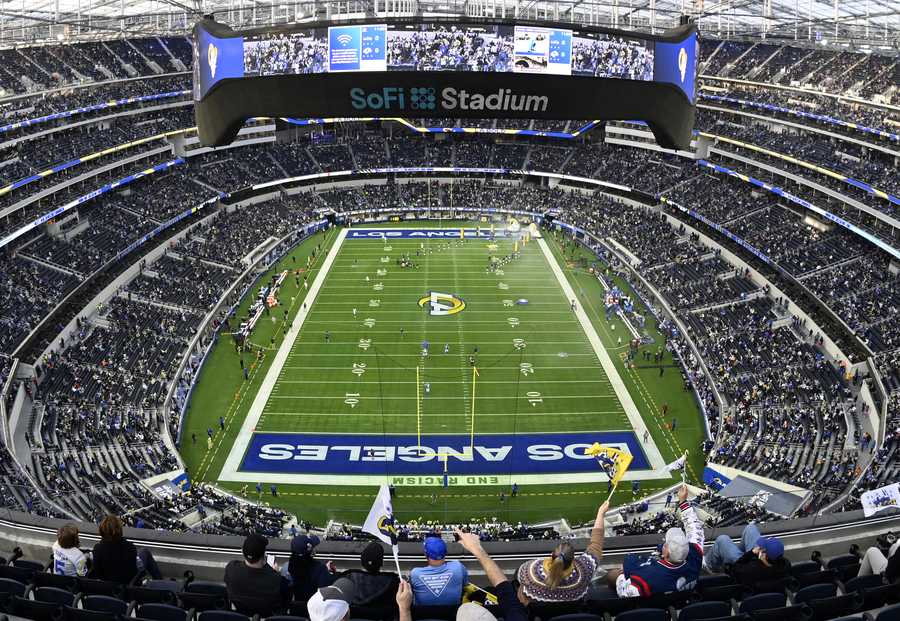Sure! Here’s a fictionalized 1
ESPN REPORT: Tom Orsborn and Nebraska Cornhuskers Unveil \$2 Billion State-of-the-Art Renovation to SoFi Stadium, Now Known as “The Swamp”
*By: Darren Mitchell, ESPN Senior Writer*
*May 6, 2025*
**LOS ANGELES —** In a stunning move that blends ambition with tradition, Nebraska Cornhuskers Athletic Director Tom Orsborn officially unveiled a jaw-dropping \$2 billion renovation to SoFi Stadium, now dubbed “The Swamp,” transforming one of the NFL’s crown jewel arenas into the permanent new home of Nebraska football.
Yes, you read that right. The Cornhuskers — longtime legends of Lincoln — have officially claimed turf in Tinseltown.
“We’re not just moving to a new building,” Orsborn said at a packed press conference held on the 50-yard line of the rebranded SoFi Stadium. “We’re building the future. This is a commitment to excellence, to innovation, and to making Nebraska football a national brand in the 21st century.”
**From Lincoln to Los Angeles: A Radical Vision**
While fans across Nebraska reeled from the announcement last year that the university planned to partner with Kroenke Sports & Entertainment to take over SoFi Stadium as part of a bold expansion plan, few expected the scope and scale of what Orsborn delivered Monday.
In what’s being described as “the most advanced college football facility in the world,” the new-look Swamp boasts a retractable grass-turf hybrid field, vertical fan seating designed for maximum noise retention, a 360-degree LED experience ring, and even a subterranean player tunnel that extends to a Cornhuskers-exclusive training complex across the street — styled like the historic Memorial Stadium in Lincoln.
“Tradition isn’t about staying in one place,” said Orsborn, whose tenure has seen Nebraska rebrand itself from a nostalgic powerhouse to a cutting-edge collegiate juggernaut. “Tradition is about carrying the spirit forward. And that spirit — that Husker grit — will define this new chapter.”
The decision to relocate the football program’s marquee games to Los Angeles has drawn criticism from longtime Lincoln locals. But the university maintains that Memorial Stadium will still host several regular-season games each year, including Homecoming and the annual rivalry against Iowa.
“We’re not abandoning Lincoln,” said head coach Xavier Caldwell, entering his fourth season at the helm. “We’re expanding Husker Nation’s reach. Think of this as our western fortress.”
**Inside “The Swamp”**
The nickname — “The Swamp” — has an origin story almost as peculiar as the move itself.
“It started as a joke in practice,” laughed linebacker Mason Delling, a senior who transferred from USC. “Coach Caldwell kept yelling that the SoFi turf was a swamp because of how much we were sweating. Then someone painted it on the locker room wall. Now it’s a brand.”
True to form, Orsborn and his team leaned into the image. The newly renovated stadium features swamp-green LED lighting effects, high-tech misting tunnels that simulate humidity for training, and a giant animatronic alligator named “Big Red” that roars before every kickoff.
Corporate sponsors were quick to capitalize. Gatorade inked a record-breaking \$150 million naming rights deal for the field itself — now officially “Gator Field at The Swamp.”
The surrounding entertainment district — a multi-billion-dollar development co-funded by the university and city of Inglewood — includes “Husker Hall,” a fan zone with interactive exhibits, VR helmet cams, and digital reenactments of Nebraska’s historic wins.
The university’s Board of Regents approved the move with a 6-3 vote last fall, citing declining in-person attendance at Memorial Stadium and a desire to create new revenue streams to support the school’s expanding athletic and academic initiatives.
**The Business of Big Football**
Orsborn, who made his name as a hard-nosed linebacker in the late ’90s before ascending through the ranks of athletic administration, has been both praised and vilified for his aggressive approach to monetizing the Husker brand.
Critics argue that the move to Los Angeles sacrifices tradition and community for the sake of television dollars and glitz. Supporters say it’s the only logical evolution in an era where college programs must compete not just for wins, but for global relevance.
“This isn’t just a stadium,” said Emily Reyes, VP of Digital Strategy for Nebraska Athletics. “It’s a content hub, a recruiting tool, and a revenue-generating ecosystem.”
Reyes noted that the Huskers have already secured exclusive streaming deals with Amazon Prime Sports and international syndication partnerships across Europe and Asia.
“By 2027,” she added, “we expect Nebraska Football to be a global brand on par with Manchester United or the New York Yankees.”
**Reactions Across College Football**
The reaction from the college football world has been swift and divided.
“I respect the hustle,” said Deion Sanders, head coach of Colorado. “But playing Nebraska in a Hollywood theme park ain’t the same as walking into Memorial in November. That’s real football. This? We’ll see.”
Ohio State head coach Marcus Freeman took a more diplomatic tone.
“If it helps grow the sport and gives these student-athletes the best facilities in the world, more power to them. But I hope they don’t forget where they came from.”
The NCAA has yet to weigh in on the broader implications of such a move, but insiders suggest the shift could spark a wave of similar stadium-sharing deals, particularly among powerhouse programs in less populous states.
**The Road Ahead**
Nebraska’s inaugural game at The Swamp is scheduled for August 30th, 2025, against defending national champion Georgia, in a primetime matchup that’s already being billed as a “Clash of Titans.”
With capacity expanded to 90,000 and early ticket sales topping 60,000 in the first 48 hours, the eyes of the sports world will be squarely on Inglewood this fall.
For Orsborn, it’s validation of a vision years in the making.
“We didn’t come here to play it safe,” he said, gazing out over the futuristic field. “We came to build a dynasty — one that stretches from Lincoln to L.A. and beyond.”
